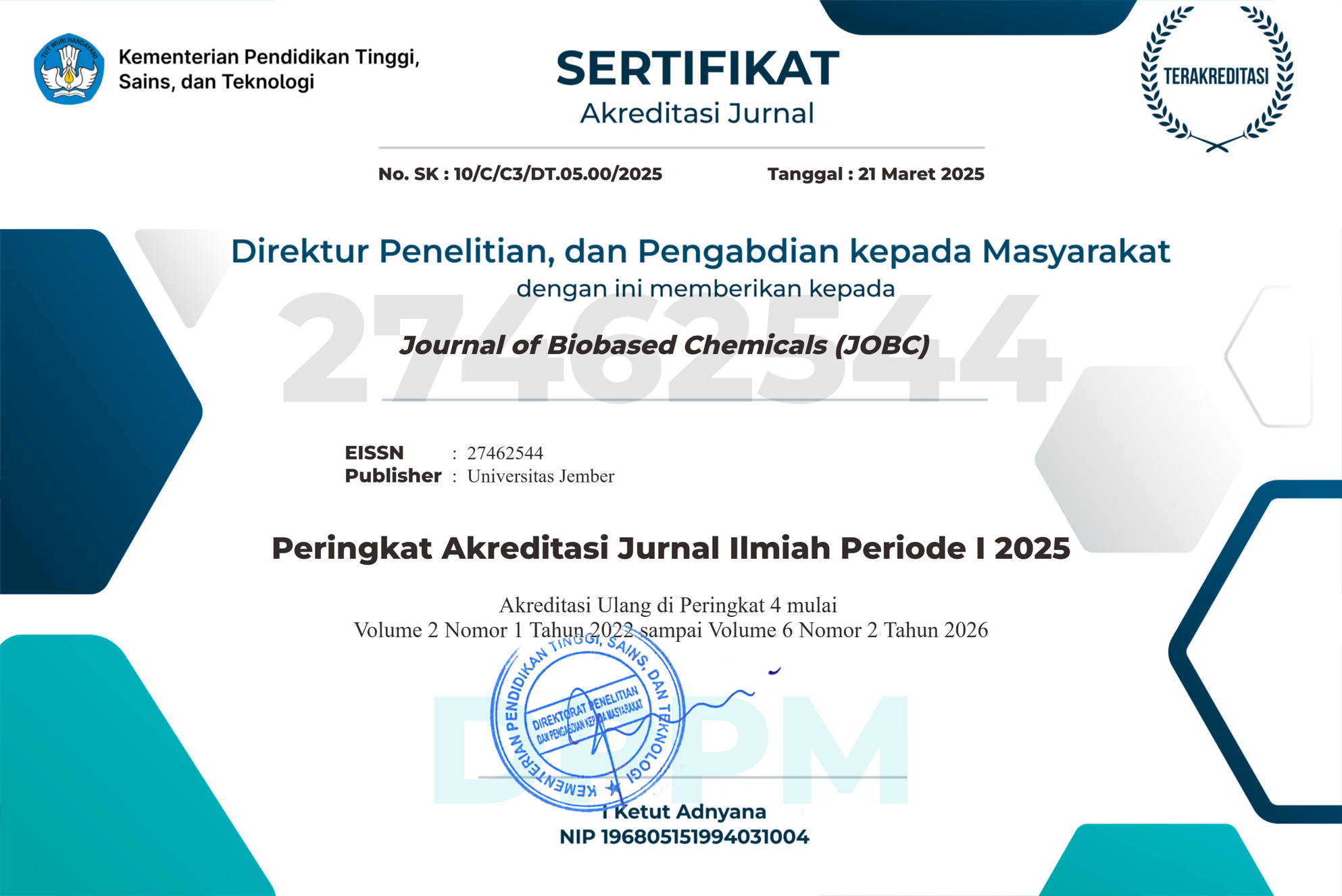Adsorption of Methylene Blue by Magnetic Activated Carbon/Chitosan Composites Prepared from Spent Coffee Grounds : Kinetic, Equilibrium and Thermodynamic Study
DOI:
https://doi.org/10.19184/jobc.v3i1.282Keywords:
Adsorption, magnetic activated carbon/chitosan, methylene blue, spent coffee grounds.Abstract
Spent coffee grounds were used as the main ingredient for the composing of magnetic activated carbon/chitosan (MACC) composites and synthesized using the coprecipitation method. The SEM-EDX characterization was used to understand elemental identification and morphology of the adsorbent before the MACC was applied for the removal of methylene blue (MB) from aqueous solution. Magnetic activated carbon/chitosan was fabricated with the subsequent circumstances: the molar ratio of ferrous/ferric ions was 0.02 mol : 0.01 mol, coprecipitation temperature at 60°C for 5 h. Adsorption parameters for MB were investigated. The adsorption by MACC was evaluated thermodynamically for the discharge of MB from an aqueous solution as adsorption reckon on temperature. Calculations of thermodynamic parameters were conducted. Batch adsorption experiments were operated at 308 K; 318 K and MB concentration of 5-50 mg L-1 to investigate the adsorption behavior. According to the results, MACC has a porous structure. The adsorption process is more reactive upon raising the temperature, a process commonly known as endothermic. Based on R2values, the adsorption of MB onto MACC was found best fitted to Freundlich model. The maximum adsorption capacity of the MACC was counted as 24.5 mg/g. The adsorption process is spontaneous, which was concluded from the calculation of thermodynamic parameters.








